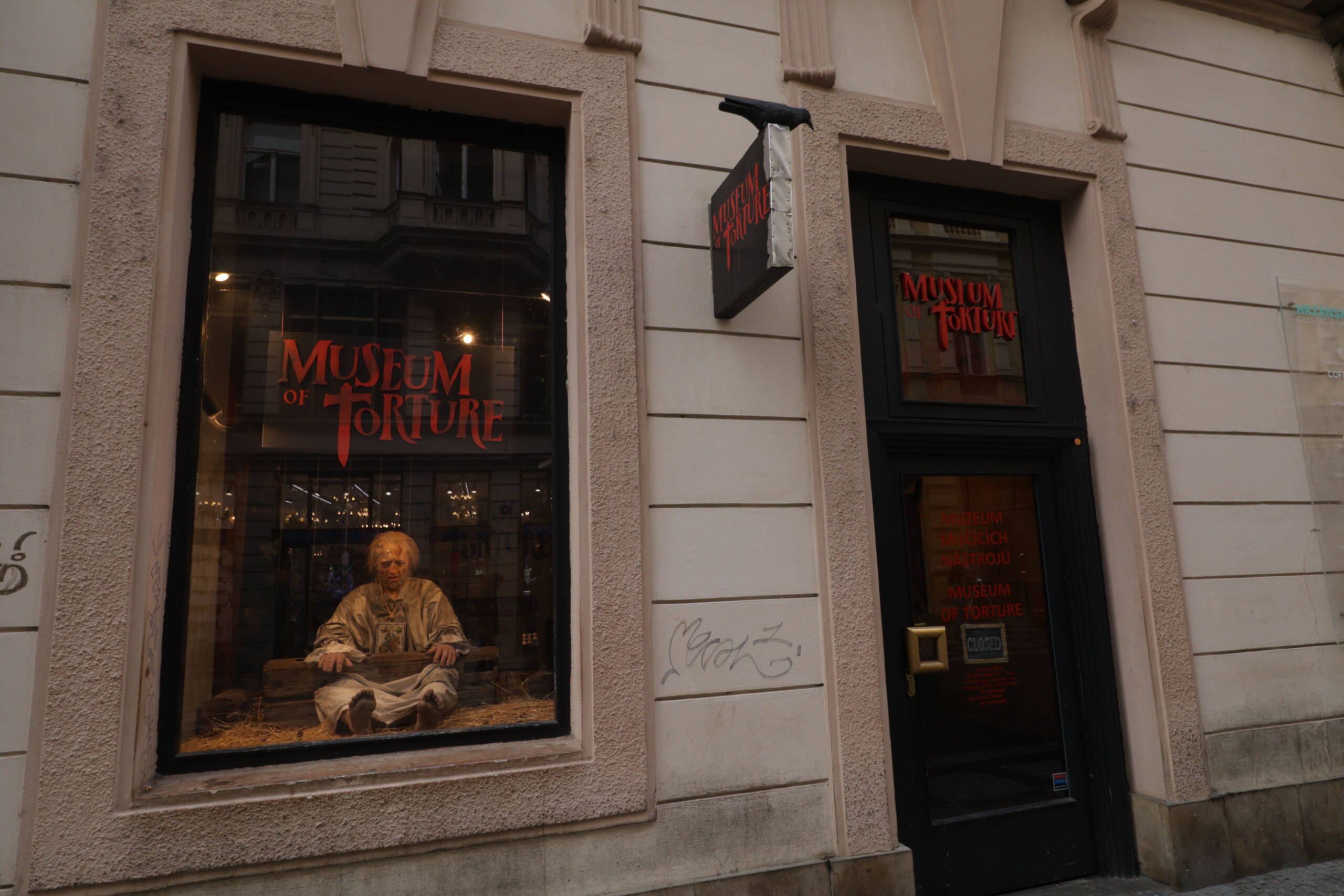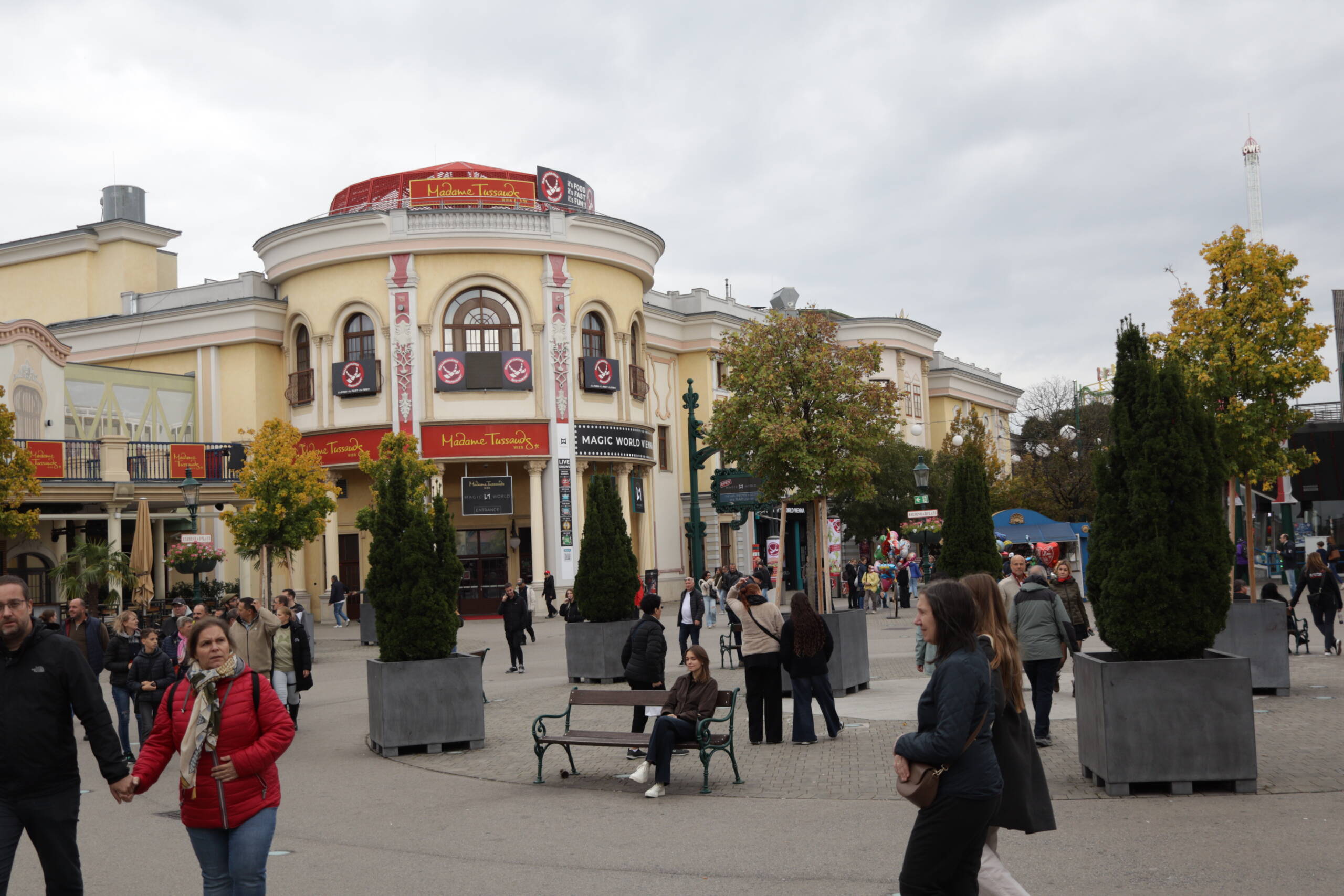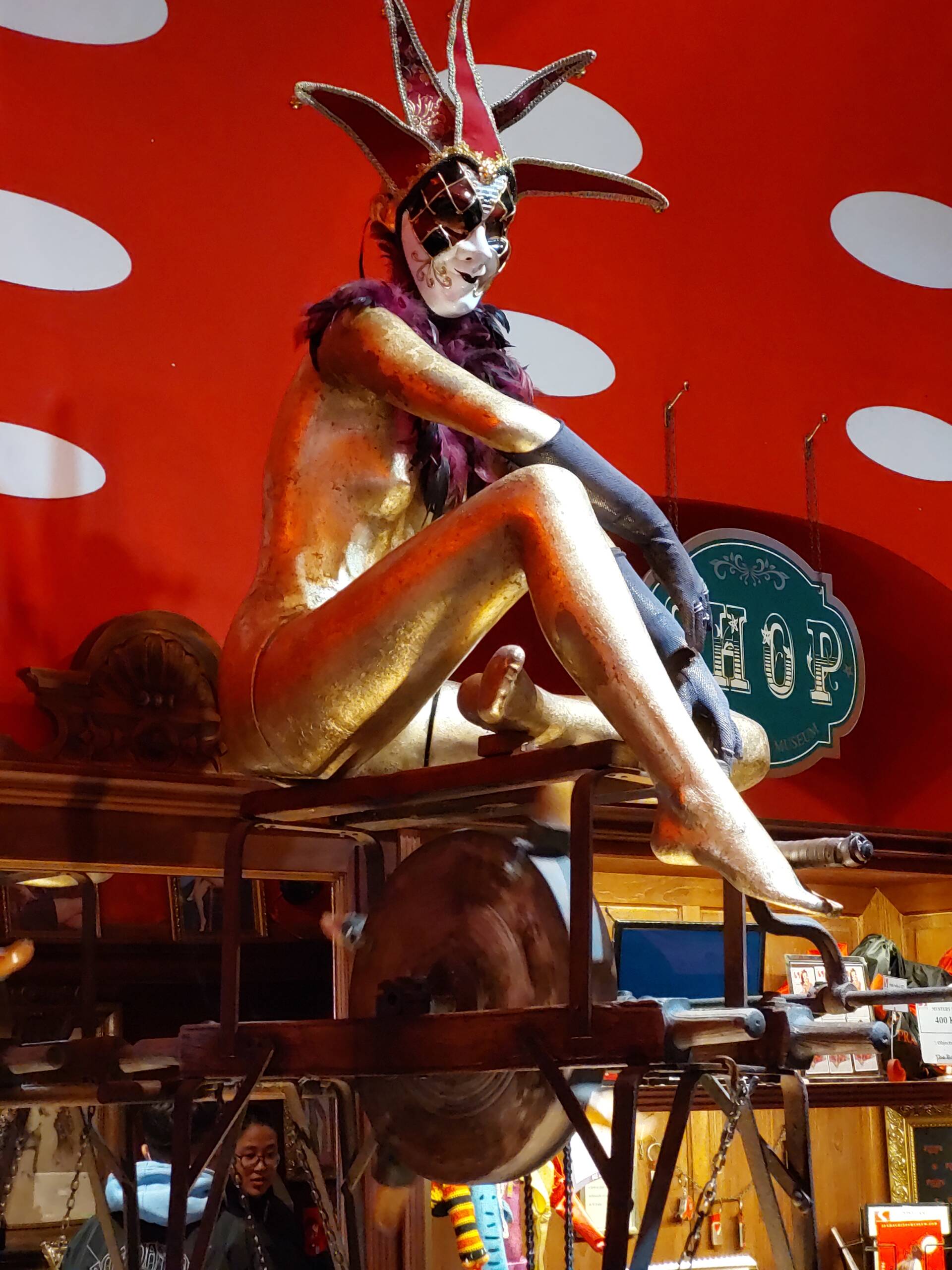There’s a certain kind of museum you come across in the heart of old European cities—the kind with lurid signage, a mannequin in the window, and a promise of shock or spectacle inside. The Museum of Torture in this photo is a perfect specimen. Its facade is wedged between respectable stone walls, yet the bright blood-red lettering and grim display in the window—the mannequin of a prisoner Every traveler has seen them—the garish signs, the mannequins slumped in windows, the oversized gothic letters promising a thrill. At first glance, they tug at your curiosity. The Museum of Torture lures you with dimly lit props and red lettering that looks like it belongs on the cover of a pulp horror novel. Step closer, and you’ll find wax figures in shackles, hay scattered across the floor, and displays that look more like a Halloween haunted house than a serious exploration of history. These places are designed to catch your eye, pull a few coins from your pocket, and then send you back out with little more than a staged photo for proof.

Shift from fear to absurdity, and you’ll find the wax museums. The big ones, like Madame Tussauds, pride themselves on near-perfect recreations of celebrities, but the smaller, seedier cousins that pop up in regional cities are another story. Their figures often look slightly off—as if Napoleon’s face had been modeled from memory after too much wine, or Marilyn Monroe had been frozen mid-blink.

The formula is almost always the same. Wax museums with celebrities who look unsettlingly “off,” chocolate museums that dangle the promise of free samples but mainly funnel you into the gift shop, haunted dungeons that lean on sound effects and cheap jump scares, and—most notoriously—the Sex Machines Museum. That one stands out because of its sheer audacity: golden mannequins in masks posed atop mechanical contraptions that look as though they belong in a carnival sideshow, not a museum. Inside, you’ll find dusty glass cases, bizarre gadgets, and more than a little awkwardness. It’s a place that thrives on the shock factor, not on education.

The problem isn’t just that these museums are kitschy—it’s that they eat into your limited travel time and budget. For every hour spent wandering past poorly explained replicas of medieval racks or staring at mannequin jesters in feathered collars, you could be exploring something authentic: a local market, a centuries-old church, or even just a quiet café where you can watch the rhythm of the city unfold. Tourist trap museums rarely leave you with insight or connection; they leave you with the vague sense that you’ve been hustled.
They also prey on the traveler’s fear of missing out. The signage makes it feel like a “must see,” as if you’d be skipping some secret side of history if you don’t go inside. But the truth is, you won’t miss anything valuable. These attractions recycle clichés, trading in spectacle rather than substance. They’re not windows into culture—they’re distractions dressed in neon.
So the best advice is simple: walk past them. Resist the urge to step inside for a laugh. If you’re curious about history, there are always better places to learn. If you’re chasing something quirky, cities are full of authentic eccentricities—hidden courtyards, street art, eccentric shops—that won’t charge you a ticket for thirty minutes of staged discomfort. Your time is your most precious currency while traveling, and it’s not worth spending it on these hollow performances.
If you want stories worth retelling, you’ll find them in real experiences, not in the dusty corners of a “museum” designed to trick tourists into buying a ticket. Leave the mannequins and machines to those who didn’t know better, and spend your hours on the things that truly shape a journey.
Leave a Reply